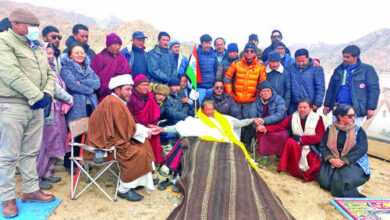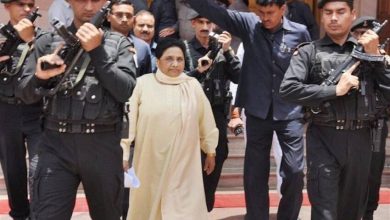Kochrab Ashram: Gandhi’s first salvo against Untouchability
Siby K. Joseph

Gandhi established his first ashram in India at Kochrab village in Paldi area near Ahmedabad, on 25 May 1915 after his return from South Africa. Members of Gandhi’s Phoenix Settlement in Durban arrived in India before his arrival. They were staying in Rabindranath Tagore’s Shantiniketan. Gandhi too stayed there for a brief period of time and undertook some experiments in self-help which Tagore described as ‘key to swaraj.’
Places like Hardwar, Vaidyanathadham and Rajkot were suggested to him as the location of his ashram but he had a predilection for Ahmedabad “Being a Gujarati I thought I should be able to render the greatest service to the country through the Gujarati language. And then, as Ahmedabad was an ancient centre of handloom weaving, it was likely to be the most favourable field for the revival of the cottage industry of hand-spinning.
There was also the hope that, the city being the capital of Gujarat, monetary help from its wealthy citizens would be more available here than elsewhere.” But one has to keep in mind that it was a busy hub of mill cloth too. The inmates were accommodated in Kochrab bungalow of Jivanlal Desai, a barrister in Ahmedabad, which was hired for the establishment of the ashram. The original name of this Ashram was Satyagraha Ashram even though it is known as Kochrab Ashram.
Gandhi explains in his Autobiography how he arrived at the name Satyagraha Ashram “The first thing we had to settle was the name of the Ashram. I consulted friends. Amongst the names suggested were ‘Sevashram’ (the abode of service), ‘Tapovan’ (the abode of austerities), etc. I liked the name ‘Sevashram’ but for the absence of emphasis on the method of service. ‘Tapovan’ seemed to be a pretentious title, because though tapas was dear to us we would not presume to be tapasvins (men of austerity).
Our creed was devotion to truth, and our business was the search for and insistence on truth. I wanted to acquaint India with the method I had tried in South Africa, and I desired to test in India the extent to which its application might be possible. So my companions and I selected the name ‘Satyagraha Ashram’, as conveying both our goal and our method of service.”
Draft Constitution for the Ashram printed in 1915 for circulation among friends for their comments included three names Satyagrahashram, Deshsevashram and Sevamandir . For the conduct of the Ashram a code of rules and observances was necessary and Gandhi himself drafted the same. The draft Constitution for the Ashram included vows of Truth, Non-violence, Brahmacharya , Control of the Palate, Non-Stealing, Non-Possession, Swadeshi, and Fearlessness. The vow against Untouchability and paragraph on Varnashram were added by Gandhi in the third draft of the Constitution.
Just a few months after the establishment of the Ashram Gandhi received a letter from Amritlal Thakkar. He stated in the letter that ‘A humble and honest untouchable family is desirous of joining your Ashram. Will you accept them?’
Gandhi was perturbed by the request of noted social worker popularly known as Thakkar Bapa. He never expected that such a request would come seeking admission of an untouchable family to the Ashram. Gandhi took the challenge and decided to admit the family consisted of Dudabhai, his wife Danibehn and their daughter Lakshmi.
This act of Gandhi created a flutter among friends who were supporting the ashram. Even Kasturba had some reservations. The first one was the difficulty with regard to the use of the well, which was partly controlled by the owner of the bungalow. The patrons of the ashrams did not like the idea at all and they stopped their monetary help. The ashram was faced with a financial crisis, but Gandhi was ready to go and stay in the untouchables’ quarters and live on whatever they could get by manual labour.
But Gandhi was surprised with the great gesture of a rich person viz. Ambalal Sarabhai who came to the ashram and donated Rs. 13,000. Gandhi wrote in his Autobiography later “The admission of this family proved a valuable lesson to the Ashram. In the very beginning we proclaimed to the world that the Ashram would not countenance untouchability.
Those who wanted to help the Ashram were thus put on their guard, and the work of the Ashram in this direction was considerably simplified. The fact that it is mostly the real orthodox Hindus who have met the daily growing expenses of the Ashram is perhaps a clear indication that untouchability is shaken to its foundation.”
It was in Kochrab Ashram Vinoba Bhave’s first meeting with Gandhi took place. The report published in the newspapers about Gandhi’s speech at the Banaras Hindu University in February 1916 attracted the attention of Vinoba. Vinoba Bhave wrote a letter to Gandhi and got a call for a personal meeting at Kochrab Ashram in Ahmedabad. Their meeting took place on June 7, 1916. This meeting changed the course of Vinoba’s life and he became a lifelong disciple of Gandhi.
Vinoba wrote later “When I was in Kashi, my main ambition was to go to the Himalayas. Also there was an inner longing to visit Bengal. But neither of the two dreams could realise. Providence took me to Gandhi and I found in him not only the peace of the Himalayas but also the burning fervor of resolution, typical of Bengal. I said to myself that both of my desires had been fulfilled.”
After some months, Vinoba’s younger brother Balkoba also joined the Ashram. Both of them assisted in the scavenging work by lifting the pots of night soil. It was unacceptable to some members of the Ashram. They raised the question “How could two Brahmins take to such work?” Gandhi was away from the scene. One his return when he came to know about it, he said “Scavenging is a good and pious work. It should now become a part of daily routine. Those who don’t like it can leave the ashram.”
It was from here the very foundation of Gandhi’s first Satyagraha struggle at Champaran, Bihar in 1917 was made. He decided to fight for the causes of peasants who were forced to cultivate indigo by the planters.
This Ashram is currently managed by Gujarat Vidyapith – a university founded by Mahatma Gandhi in 1920 in the wake of the noncooperation movement. At present the ashram area consists of the bungalow which has a library on the top floor and living rooms of Gandhi on the ground floor, open prayer ground and kitchen and storerooms behind the bungalow.
Due to the changes that took place in the area the site of well the ashramites shared with the owner of Bungalow is now on the other side of the road. It was where the ashramites were subjected to humiliation while lifting water on grounds of pollution due to the admittance of an untouchable family. This ashram will remain as an iconic symbol of Gandhi’s fight against the practice of untouchability.
About the Author
Dr. Siby K. Joseph is Director, Sri Jamnalal Bajaj Memorial Library and Research Centre, Sevagram Ashram Pratishthan, Wardha-442102, Maharashtra.
Email:directorjbmlrc@gmail.com





